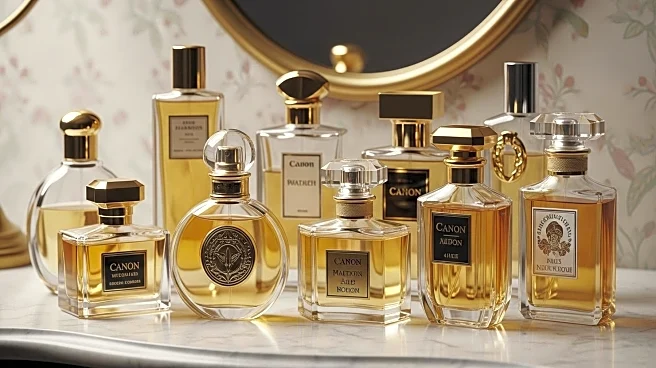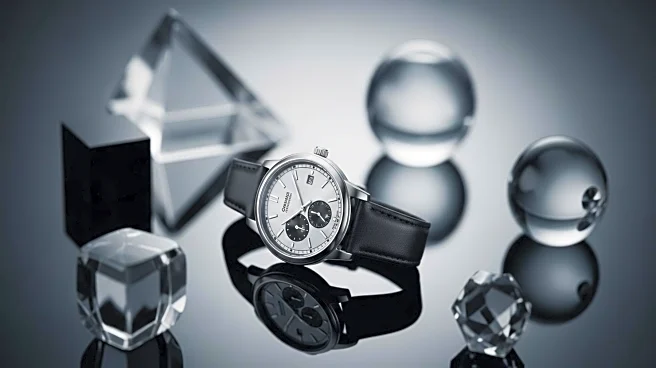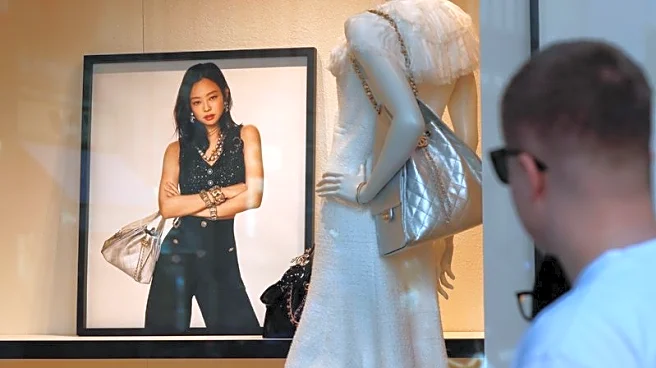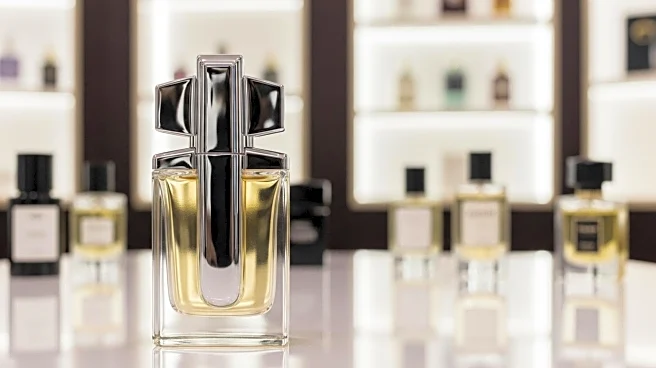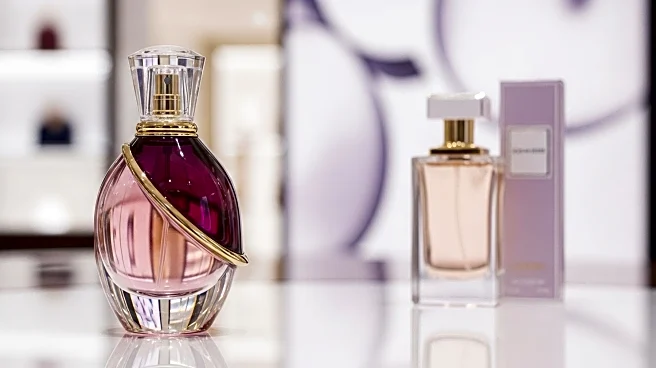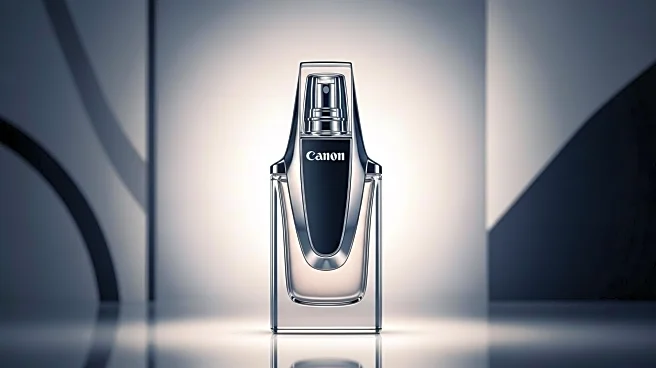What's Happening?
Balenciaga is set to launch its first contemporary fine fragrance collection, inspired by a perfume originally created in the 1940s. The collection includes ten perfumes priced at $320 each, available in select Balenciaga boutiques in Europe and North America, as well as on its e-commerce site. The scents are a modern reinterpretation of Le Dix, a perfume created by Cristóbal Balenciaga, featuring fragrances such as No Comment, Muscara, and 100%. The launch comes at a time when the fragrance industry is showing signs of contraction, and luxury brands are expanding their fragrance offerings.
Why It's Important?
The launch of Balenciaga's new fragrance collection is significant for the luxury fashion house and its parent company, Kering. As the fragrance industry faces potential contraction, Balenciaga's entry into the premium perfume market could help offset challenges in its fashion business. The move aligns with Kering's strategy to focus on owning premium perfumes, following its acquisition of Creed and the launch of fragrances by Bottega Veneta. The success of this collection could influence the brand's positioning in the competitive luxury fragrance market, where niche and esoteric scents are gaining popularity.
What's Next?
Balenciaga's fragrance collection will initially be available in select regions, with a more global rollout planned. The brand will likely monitor consumer response and market trends, particularly the influence of social media platforms like TikTok, which drive popularity for unique scents. The success of this launch could lead to further expansion in Balenciaga's fragrance offerings and potentially influence other luxury brands to explore similar strategies.
Beyond the Headlines
The launch of Balenciaga's fragrance collection highlights the intersection of fashion and fragrance, where luxury brands are leveraging their heritage and storytelling to appeal to consumers. The collection's design, which mimics the original 1940s perfume, reflects a blend of nostalgia and modernity, appealing to consumers seeking both classic and contemporary experiences. This approach may set a precedent for other luxury brands aiming to capture niche markets through innovative and historically inspired products.
